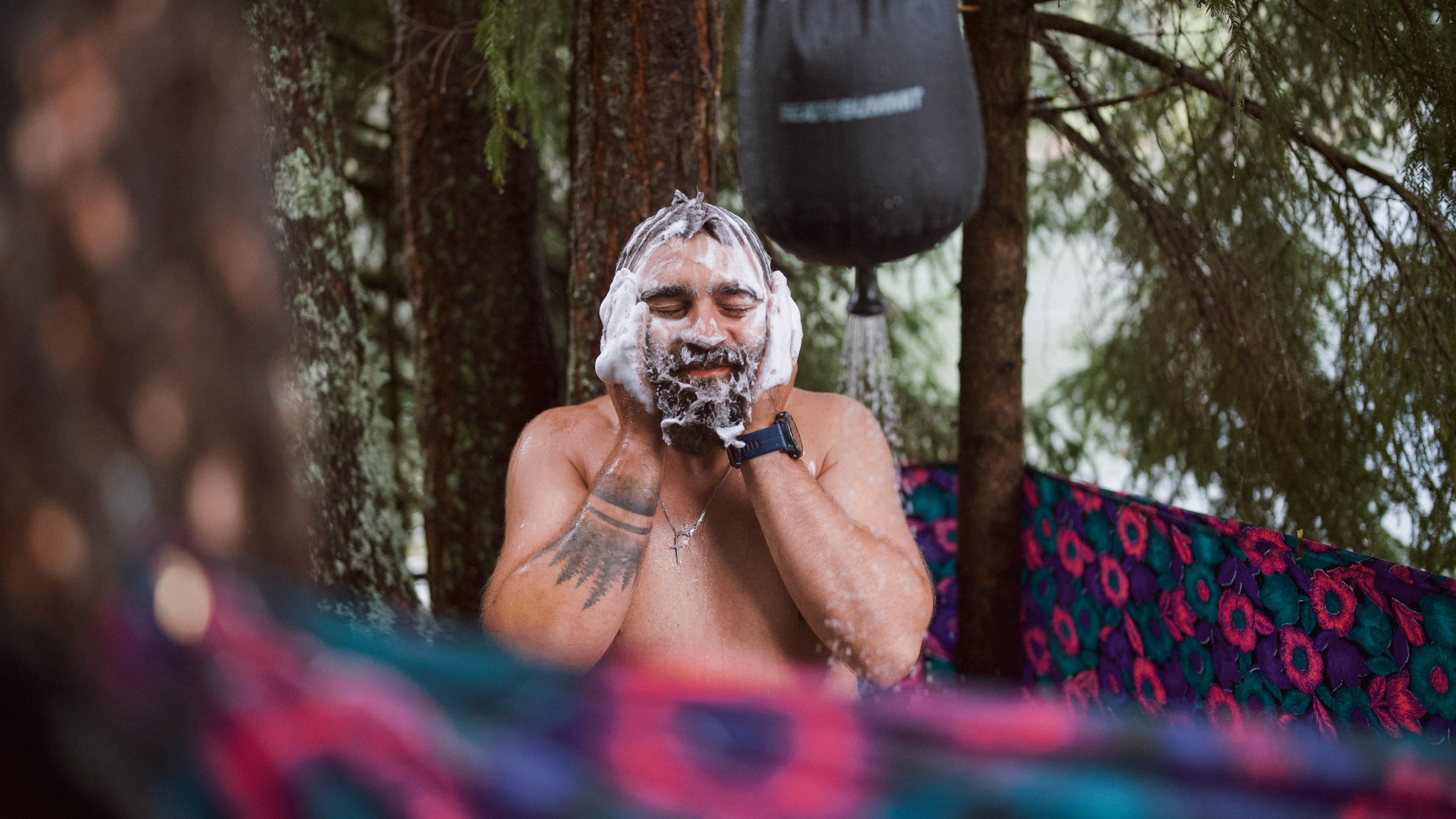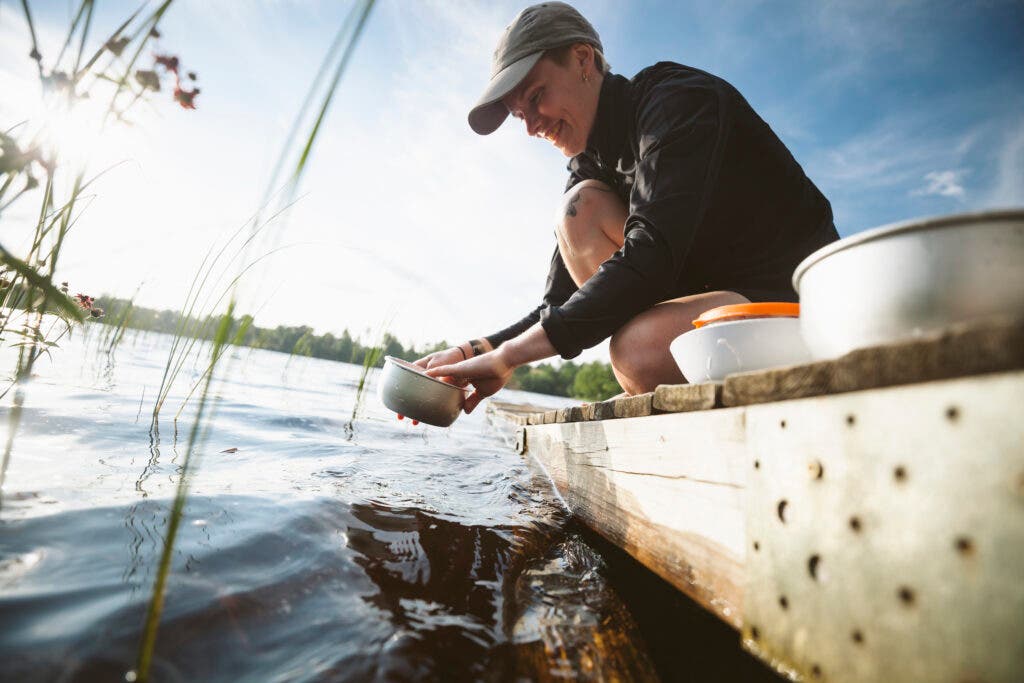Your "Biodegradable" Soap Isn't As Eco-Friendly As You Think

(Photo: ArtistGNDphotography/Getty Images)
Nowadays, most backpackers are fairly informed about Leave No Trace principles. Educational resources are widely available, and generally, hikers want to be good stewards of the trails and natural resources. But even today, a common LNT misconception lurks in many backpackers’ toiletry kits. If you’ve ever bathed au naturale with the help of camp suds, you, too, may have fallen prey to the myth of biodegradable soap.
Substances like Dr. Bronner’s have gained a sort of cult following with hikers. Washing up properly on the trail is a luxury, and can help defend against common hiker illnesses. But if used incorrectly, soap can be harmful to the environment, even if it’s marketed as safe for camping.
We dove into the topic with Shawnté Salabert, adventure writer, educator, and the author of Hiking the Pacific Crest Trail: Southern California. In her new podcast, Gear Abby, Salabert dishes out advice on all things outdoors, from pee funnels to chafing remedies. In the premiere episode of the show, Salabert debunks myths about biodegradable soap.
“I think a lot of people assume that if a soap is marked as being ‘biodegradable,’ it’s fine to use in water. The thing is, when you decide to bathe with biodegradable—or any—soap in a waterway, you’re adding something to that environment that doesn’t occur naturally,” says Salabert.
According to LNT.org, “Generally speaking, getting any soap in a water source is not acceptable or recommended. The soap can cause all sorts of issues from increased nitrogen to actually causing significant harm to aquatic inhabitants.”
For a lot of hikers, lake baths are common practice. Many backpackers spot the term “biodegradable” and assume that means a soap is safe to dispose of in any natural setting. But you’ll have to read the fine print on the back of the Campsuds bottle to know otherwise: “Soap up and wash at least 200 feet from alpine lakes and streams.” Campsuds recommends disposing of suds and water used to rinse in a cathole, no matter how tempting it is to use a lake or stream as your bathtub. Other brands offer similar guidance.
Salabert cautions that while “biodegradable” soap may break down more easily than other types of soap, the process still takes time—and requires certain bacterial conditions to occur. In water, those substances can last quite a while.

The very components that make soap effective cause imbalances in alpine lakes, rivers, and other bodies of water.
“The cleaning power in soap is driven by surfactants, agents that disturb the surface tension of water and essentially separate water from the grime you’re trying to clean off your dirty body, your crusty dishes, or your grimy gear,” says Salabert. “When soap hits a waterway, those same forces now act to disturb the ecosystem—and any living organisms that happen to be directly in the sudsy wake. Even natural surfactants create this disturbance, temporarily reducing oxygen saturation as part of the process.”
So, while your suds linger in that alpine lake, they’re likely disturbing aquatic life like fish and plants. Salabert says that dispersing your bathwater in soil, rather than bathing directly in a body of water, can help expedite the breakdown process. Minimize your soap use as much as possible, and rinse with a water bottle or a damp cloth at least 200 feet from water sources. Better yet, embrace the grime and skip the soap altogether. A swim can work wonders for cleaning off, no soap required.
Salabert opts for wearable sun protection like a sun hoody and gloves in lieu of sunscreen when possible, reducing that sticky feeling at day’s end. “Generally, for your body, you’ll also simply stay cleaner if you wear long sleeves and pants instead of short sleeves and shorts,” she says.
A little grime is all part of the backpacking experience, after all. “As an 80s kid and a little feral critter at heart, I’m partial to the belief that ‘dirt don’t hurt,’” says Salabert.
Got a question about other backpacking myths, gear, or your new favorite outdoor pastime? Email deargearabby@gmail.com, and your question could be featured on the podcast.